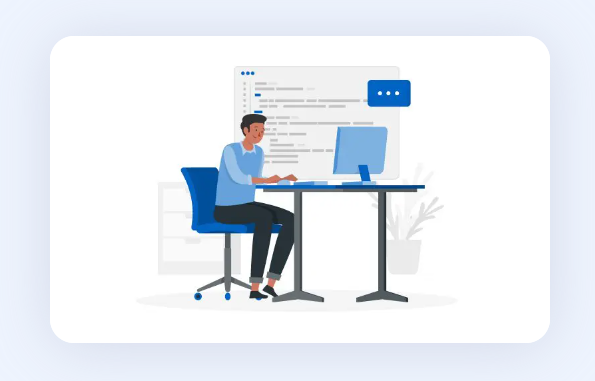
Businesses across the world experienced a shockwave of changes in 2020 due to the disruptions caused by the coronavirus pandemic. Amidst the rapidly transforming business ecosystem and accelerating digital adoption, product development companies are striving to develop new and innovative solutions to meet future demands. Companies are leveraging modern AI and IoT solutions to create quality and sustainable products that deliver excellent performance and efficiency. According to a recent study, spending on AI technologies is estimated to reach USD97.9 billion by 2023, more than 2.5 times the spending level than 2019.
With the evolving customer choices and nature of competition, companies have started shifting towards a customer-centric approach to develop products and drive business growth. For a keen understanding of the customer segments, companies articulate the whole customer journey with various AI tools and methods to maximize customer lifetime value. For instance, one of the most consumer-centric brands in the world, IKEA creates affordable customer-segment-specific solutions based on lifestyle and location, which appeals to millennials. However, a true customer-centric product strategy requires extensive market research to gather analytical information and promote wider participation.
Key Product Development Strategies
Target Market Analysis
Thorough, well-planned, and well-executed target market research help determine potential buyers’ needs and wants. The target market analysis provides a high-level perspective of the overall business field, which helps align a product or service into a specific market. Besides, the market analysis helps marketers identify the most and least valuable markets, develop buyer personas, assess the viability of a product or service, and find gaps in the market. Some of the demographic factors that one must identify in the market analysis are age, gender, income, lifestyle, geographical location, and preferences of the target audiences.
Market research can be done by conducting surveys or product testing to determine how the target audience responds to the product/service. Also, research about your competitors by visiting their website, signing up for their email list, and creating a report by identifying how the new product can outperform them and the challenges that one might face. Clearly define all projections such as project lead time, potential sales, marketing costs, raw material costs, tariff costs, labor costs, and other preliminary sales tactics to ensure the success of the product.
Product Designing
If you are developing tangible products, create a sketch to figure out dimensions, features, and their functionality. Make a list of the components, identify vendors that supply those items, and outline specific benefits the customer will receive from the products. Consider patent/legal considerations, dimensions, timelines for production, assembly requirements/process, add-ons/accessories, functionality, storage, and packaging for building physical products. For example, if you are manufacturing a product that utilizes semiconductors, then find answers to questions like how long it will take to receive a particular quantity of semiconductors, who will be supplying the microchips, what happens if the vendors fail to supply a pre-determined number of chips in a definite time, etc.
Service design is stakeholder-oriented since the intention is to improve the company’s services better than its competitors and enhance customer experience. Service designing encompasses everything from planning and organizing people to infrastructure and material components. Today, companies go to great lengths to create unique experiences for their customers. Service designers need to focus on human stories and insights and develop empathy for users to ensure the development of relevant ideas. Few things to consider while designing services are features/benefits analysis, cost of materials/software/hardware, defined customer expectations, subcontractors/ team members/other necessary parties, agreements/contracts, and copyrights, and other legal considerations.
Product Prototyping
Prototype, an early form of your final product, is built to test a concept or process. Product prototyping is an inexpensive way to build and test the parts of the design that might turn out to be flawed, which could save a lot of time, effort, and money to make the full product and resolve issues on the front end. Some businesses might choose to run a small-scale release to check the response from the selected target audiences. Product prototyping provides manufacturers the last opportunity to eliminate any technical errors or add highly demanded features to better adoption of the production.
Prototypes can also help engineers determine the overall production costs, the amount of material required, and the true cost-per-unit of mass-producing their product. The structural weaknesses in the product could affect its functionality; thus, a prototype is essential to highlight any design unknowns and avoid downstream discovery. A variety of industries such as automotive, construction, and electronics develop prototypes before starting full production. Although many initial prototypes are rejected for being impractical and difficult to develop, they offer new ideas and inspiration.


































